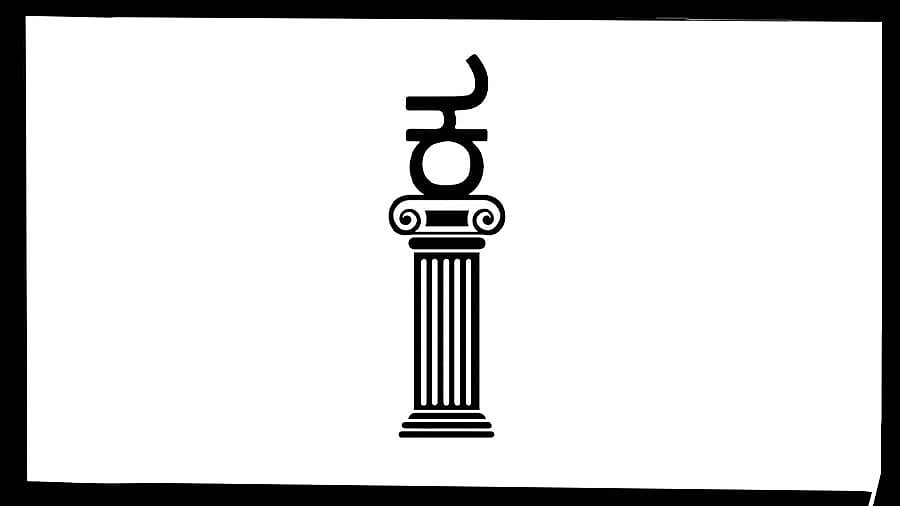
Credit: DH Illustration
Srikar Raghavan’s new book Rama Bhima Soma, is a remarkable endeavour of translation and rediscovery. It is a powerful demonstration that “Karnataka is one of India’s most diverse states, as rich in literary and cultural traditions as it is in democratic struggles and political churns”.
This book, part of a re-energised Kannada translation ecosystem, not only rescues us from historical amnesia but contributes significantly to the overdue acceleration in the national identity, culture and soft power infrastructure that is India’s translation ecosystem.
Publishing in Kannada language has been historically robust. Print culture originated early, with newspapers like Mangaluru Samachara, founded in 1843 (later Kannada Samachara). The Kannada Book Authority has an entire history through Kannada Pustaka Samskruthi: Pustakodhyama Charithre, and works like the History of Kannada Literature by R Narasimhacharya are insightful.
There have been strong literary movements, like the Pragatishila and then the modernist Navya, helmed by stalwarts including U R Ananthamurthy. Kannada-language publishing today includes presses like Bahuroopi and Chanda Pustaka.
The English translations of authors like Girish Karnad and Vivek Shanbhag are now widely read (Srinath Perur translated both). However, there is still a gap in the translation of non-fiction. One of Kannada’s most significant voices was D R Nagaraj, who, in the 1990s, began using the concept of ‘smriti’ or ‘cultural amnesia’ to counter Western preferences for intellectual understanding.
While Nagaraj’s works are known to an academic Indian Anglophone audience through previous translations of his essays in The Flaming Feet and Listening to the Loom (both by Prithvi Datta Chandra Sobhi), his ideas have not perhaps been adequately contended with in the larger Indian mainstream. A forthcoming book by Professor N S Gundur, under the NIF Translation Fellowship, will bring his ambitious posthumously published work Allamaprabhu Mattu Shaive Pratibhe to new audiences.
There is good news in the national translation ecosystem: India’s first non-profit, open-access, and crowd-sourced database of Indian translations has been set up by the Ashoka University Centre for Translations and is now searchable at www.bhashavaad.in.
Like any open-source living archive, its current dataset – featuring 14,000+ entries, 6,500+ authors, and 7,000+ translators – is a work in progress that will constantly be improved; it is more a river than an ocean. But even at this stage, it answers questions like what is and is not being translated, who is publishing the translations, who is translating, which languages are the most active, what the most translated language pairs are, and many more. It attempts to understand our multilingual landscape: the dynamics between languages, the communities that use them, and the regions they belong to.
Bhashavaad data suggests that the 125 translations in the first five decades of the 20th century leapt to 2,673 in the first two decades of the 21st century. The top ten translated languages are Bengali (1,749), Hindi (1,155), and Marathi (887), followed by Tamil, Malayalam, Urdu, Telugu, Kannada, Sanskrit, and Odia.
The top five languages that receive translations outside English (half the story) are Hindi, Gujarati, Kannada, Bengali, and Telugu. A happy discovery is the long tail of translations from Manipuri, Maithili, Kodava, Rajbangshi, Mizo, Kokborok, and Bongcher. The top languages for translation from Sanskrit are English, Gujarati, Hindi, Kannada, and Punjabi.
A work in progress
A search for ‘Kannada’ returns 1,627 results. The ‘Translated Into’ currently features 1,069 titles for Kannada, the third-highest number behind Hindi (2,134) and Gujarati (1,170). In intra-bhasha translation, the pairings found most often for Kannada were translations from Marathi (175, with 127 of these by the same translator, Chandrakant Pokale) and Telugu (163). The most-translated authors are S L Bhyrappa and Chandrasekhara Kambara.
Bhashavaad, like any database, is helpful but incomplete. However, it will improve as the Kannada ecosystem of public users, authors, and translators add new entries and correct existing ones. Publishers will soon have institutional interfaces to add or modify information. Collaborations with repositories of existing records are being explored, and data collection work continues from catalogues, websites, and library lists.
The questions facing the Kannada publishing and translation ecosystem are simple but challenging. How do we get more translations for the long tail? How do we increase the translations within Indian languages? How do we get better matching for translators with authors and publishers? How do we improve book discovery and marketing mechanisms for translated books? What is the impact, if any, of tools offered by Artificial Intelligence on translation? What is needed for Indian writing in Indian languages to be accessible more widely within and outside India? These questions are complex, but Indians have natural translation consciousness and must lead the world in translation theory, study, and practice.
In the Chintanamale series he edited for Akshara Prakashan, Nagaraj expanded on the peculiar kind of forgetfulness in which societies forget their structures of thinking: ‘Thoughts that serve neither as a mirror nor a lamp are not useful.’ We must reconnect with our languages because they are “seeds and fields – alive as the minds, tongues, throats, bodies, and air they pass through; germinating, growing roots, bearing fruit, evolving like beings”.
Linguist Claude Hagege suggests languages are not a collection of words, syntax and semantics but living, breathing organisms holding the connections of a culture. They also offer equal citizenship, identity, and soft power. Kannada’s translation ecosystem will help because there is new energy.
(Manish is an entrepreneur; Rahul is a lawyer who volunteers at the New India Foundation)